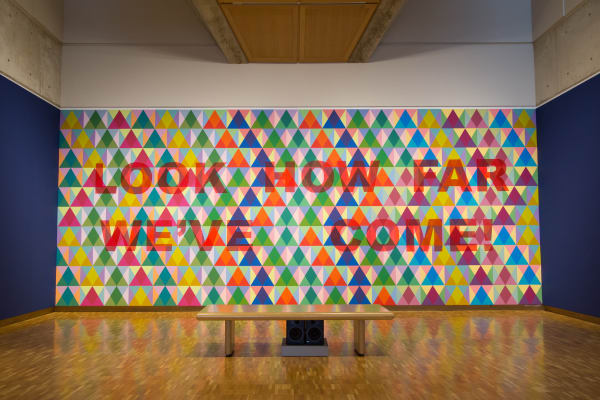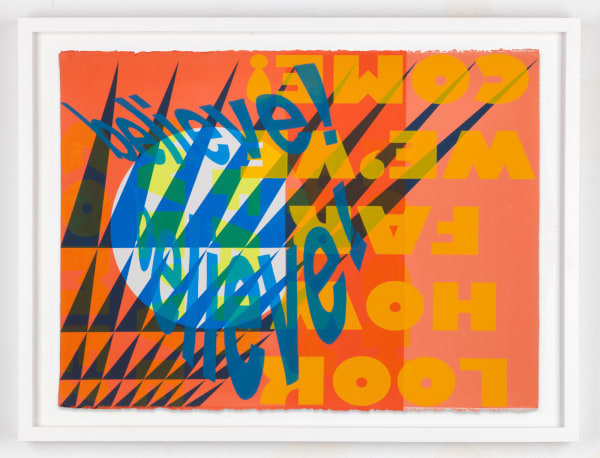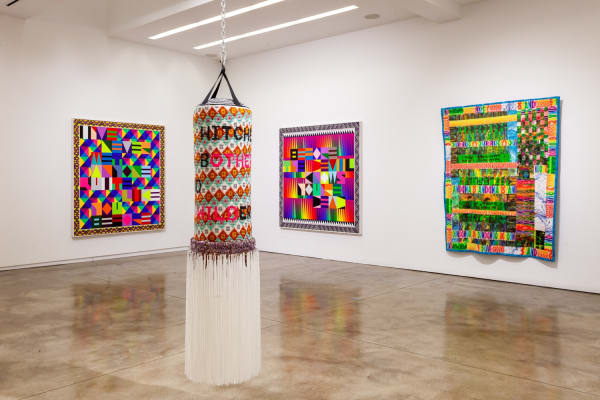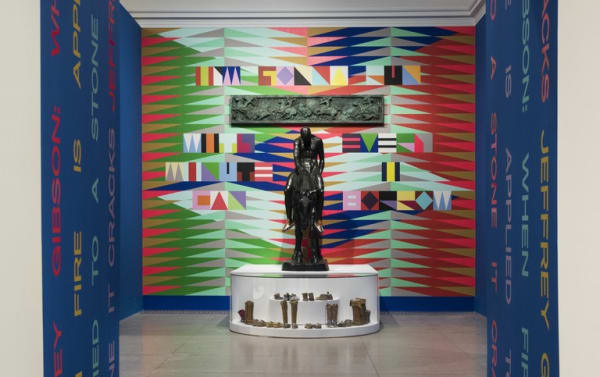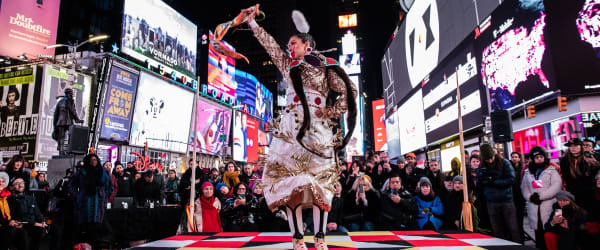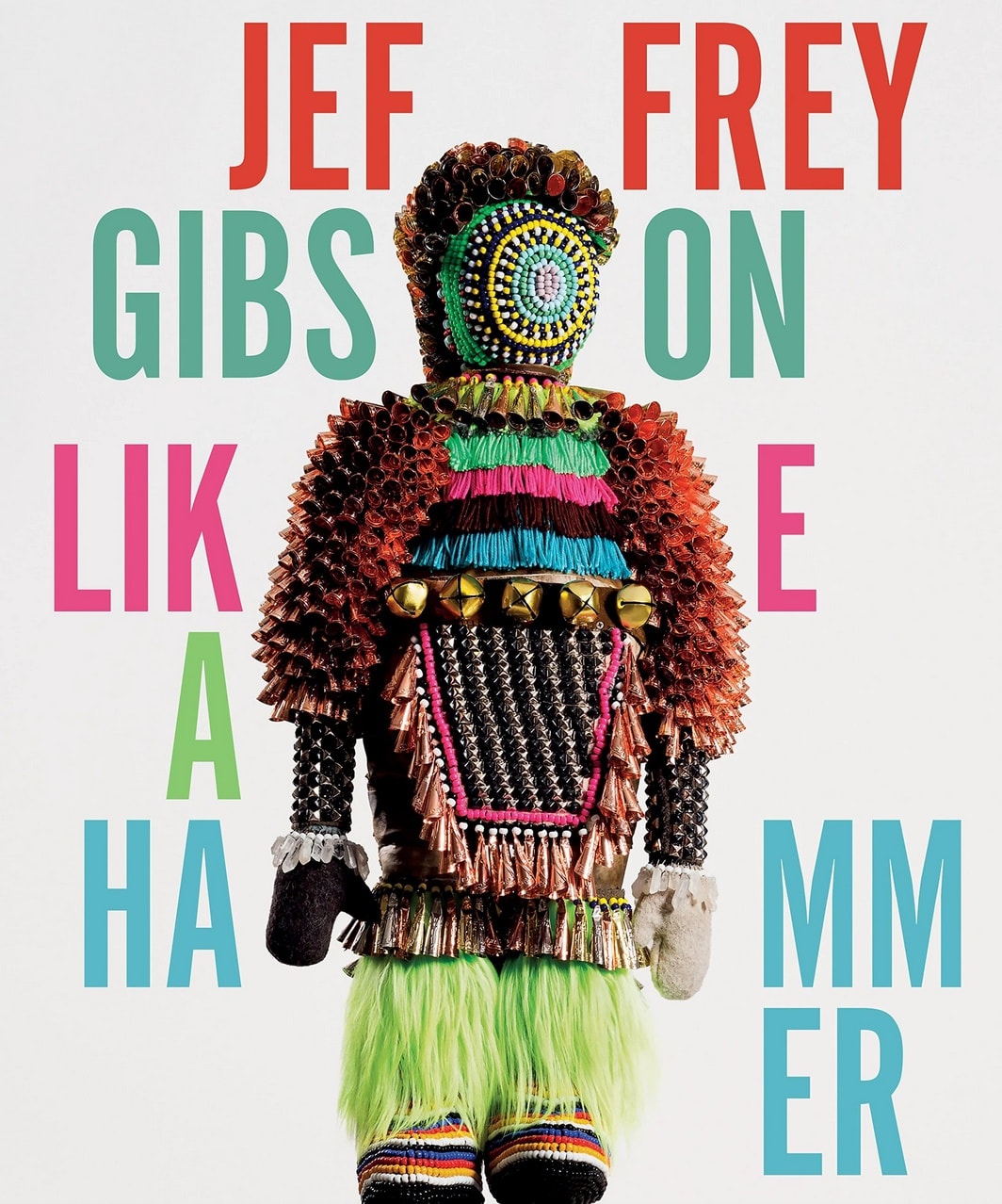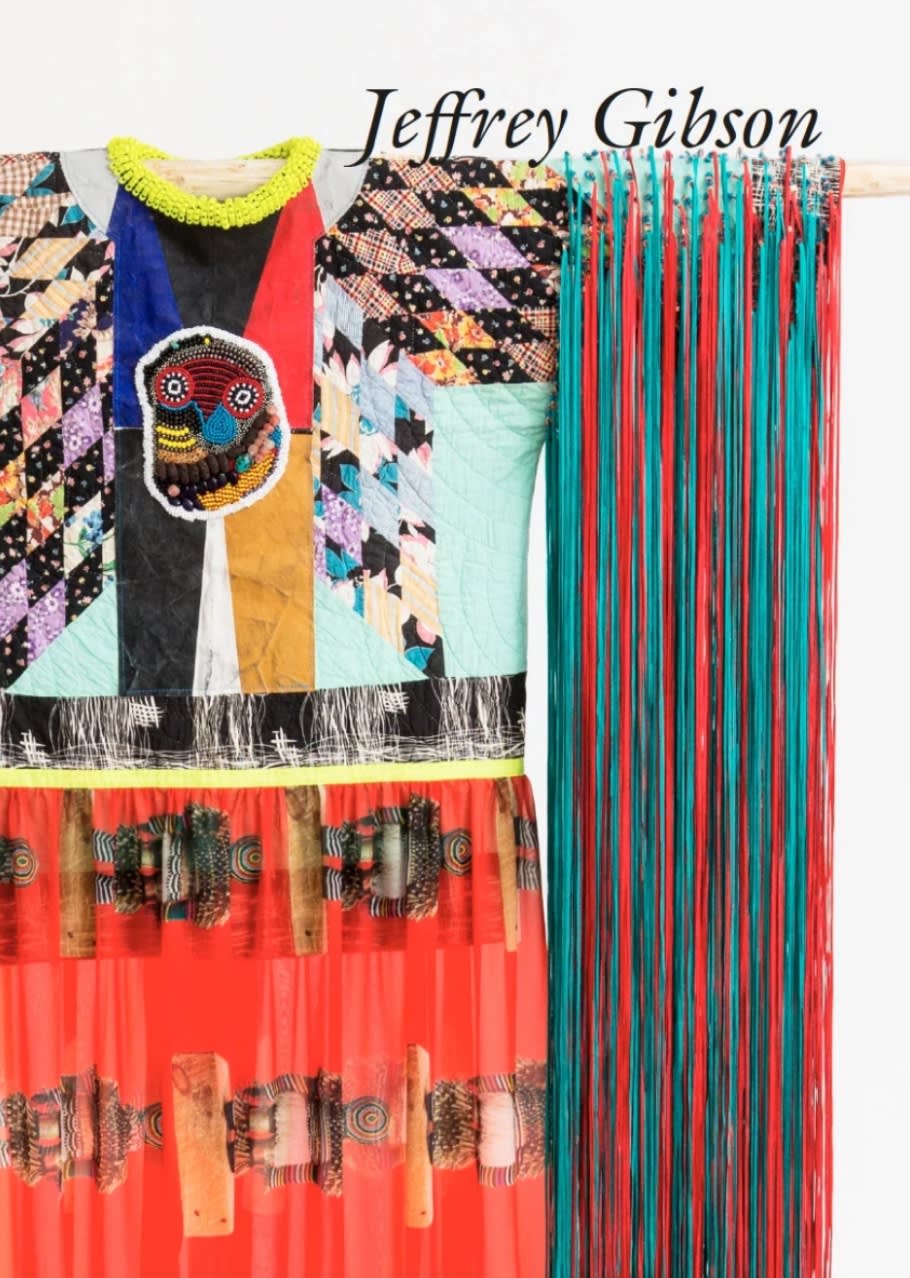-
JEFFREY GIBSON: BELIEVE! BELIEVE!
-
Kavi Gupta proudly presents the digital exhibition BELIEVE! BELIEVE!, Jeffrey Gibson’s first show of works on paper. Gibson is best known for his beaded works, paintings, reclaimed punching bags, and his long-running series examining transformational, performative garments. These prints extend his exploration of the contemporary confluence of Native American traditions with the visual languages of Modernism, personal identity, culture, history, and international social narratives.
-
The works in this exhibition had their genesis back in 2017, halfway through the first year of the Trump administration. Jeffrey Gibson had just opened a solo show at the Haggerty Museum of Art in Milwaukee called LOOK HOW FAR WE’VE COME!
“At the time I remember feeling that the phrase was fraught,” Gibson says. “I felt like we were stepping back in time in terms of civil rights and equal justice.” He kept the title nonetheless, because it reminded him of something his father taught him: that real change takes time. “Acknowledging how much progress has been made doesn’t mean you accept things as they are,” Gibson says.
In conjunction with the exhibition, Gibson led a screenprinting workshop with students from the Milwaukee Institute of Art and Design (MIAD). He modeled the workshop after the teaching practices of Corita Kent, a 20th century Roman Catholic religious sister who revolutionized the medium. Kent’s social activism caused her to be labeled “blasphemous” by the church. She persisted anyway, offering popular free screenprinting courses in Los Angeles that were attended by everyone from homeless people to college students to cultural icons, like Buckminster Fuller, John Cage, and Alfred Hitchcock.
Gibson filled one gallery at the Haggerty with Kent’s screenprints, using them to teach the MIAD students about her use of appropriated text and her methods of reversing images, tagging elements to be out of focus, and layering colors so they interfere with each other. Then Gibson designed ten unique screens so the students could learn firsthand how the screenprinting process works.
-
In addition to the phrase LOOK HOW FAR WE’VE COME!, Gibson chose two other phrases to utilize in the prints: BELIEVE! BELIEVE!, and WANT NEED.
“BELIEVE! BELIEVE! was the first punching bag I did with beaded text,” Gibson explains. “At that point I was talking to myself about being an artist, questioning whether this was viable to do.”
WANT NEED came from the first beaded wall hanging Gibson ever made, WHAT WE WANT WHAT WE NEED (2013), which invoked a line from the Public Enemy song Fight the Power.
“The difference between want and need can be confused in a time of trauma and panic,” Gibson says, “but it’s crucially important as we move forward to focus on that difference.”
Gibson added in various patterns he was working with at the time, along with a negative space circle that repeats throughout the prints. “I’ve thought about that circle in terms of indigenous architectural structures, moving from one space to another,” he says. “Those portals, circles, act as places of transition, going inside and outside. They overlap. They make a third space. I was integrating design into content, that’s where the circle comes from.”
-
Over a period of four days, Gibson and the MIAD students collaborated to mix the colors and pull about 80 prints. Some were given to the Haggerty Museum; others were given to the students. The remaining prints went back to the studio with Gibson.
“Since I didn’t have a relationship with printmaking, I was sheepish about showing them,” Gibson says. “Now when I look at them, I see how they grew into other artworks, and how the text became more significant. They make sense within the broader view of my practice.”
Reflecting upon their messaging, Gibson felt now is the perfect time to show the prints publicly for the first time.
“People have asked if I identify as an activist, and I say, ‘No,’” says Gibson. “I feel like activism is on the front line, in the marches. I’ve known about racism and homophobia my whole life. I’ve worked to carve out a space to propose a different kind of future for myself, for Indigenous people, for Indigenous queer folks, to have a space beyond the narrow space that we’re offered—a space where I can think about community-based reconciliation. That’s what I see in the work.”
Twenty-five percent of proceeds from the sale of each print will be donated to Black Lives Matter, a global network building power to bring justice, healing, and freedom to Black people across the globe, and NDN collective, an Indigenous-led organization dedicated to building Indigenous power and creating sustainable solutions on Indigenous terms through organizing, activism, philanthropy, grantmaking, capacity-building, and narrative change.
-
ABOUT THE ARTIST
2019 MacArthur Genius Grant winner Jeffrey Gibson (b. 1972, USA) combines Native American traditions with the visual languages of Modernism to explore the contemporary confluence of personal identity, culture, history, and international social narratives. Gibson is a member of the Choctaw and Cherokee nations. He currently lives and works in Hudson, New York. One of his most recognized series involves punching bags that Gibson deftly transforms into aesthetic totems. Another of Gibson’s long running series involves an examination of ceremonial garments. A selection of these garments were exhibited in the 2019 Whitney Biennial.
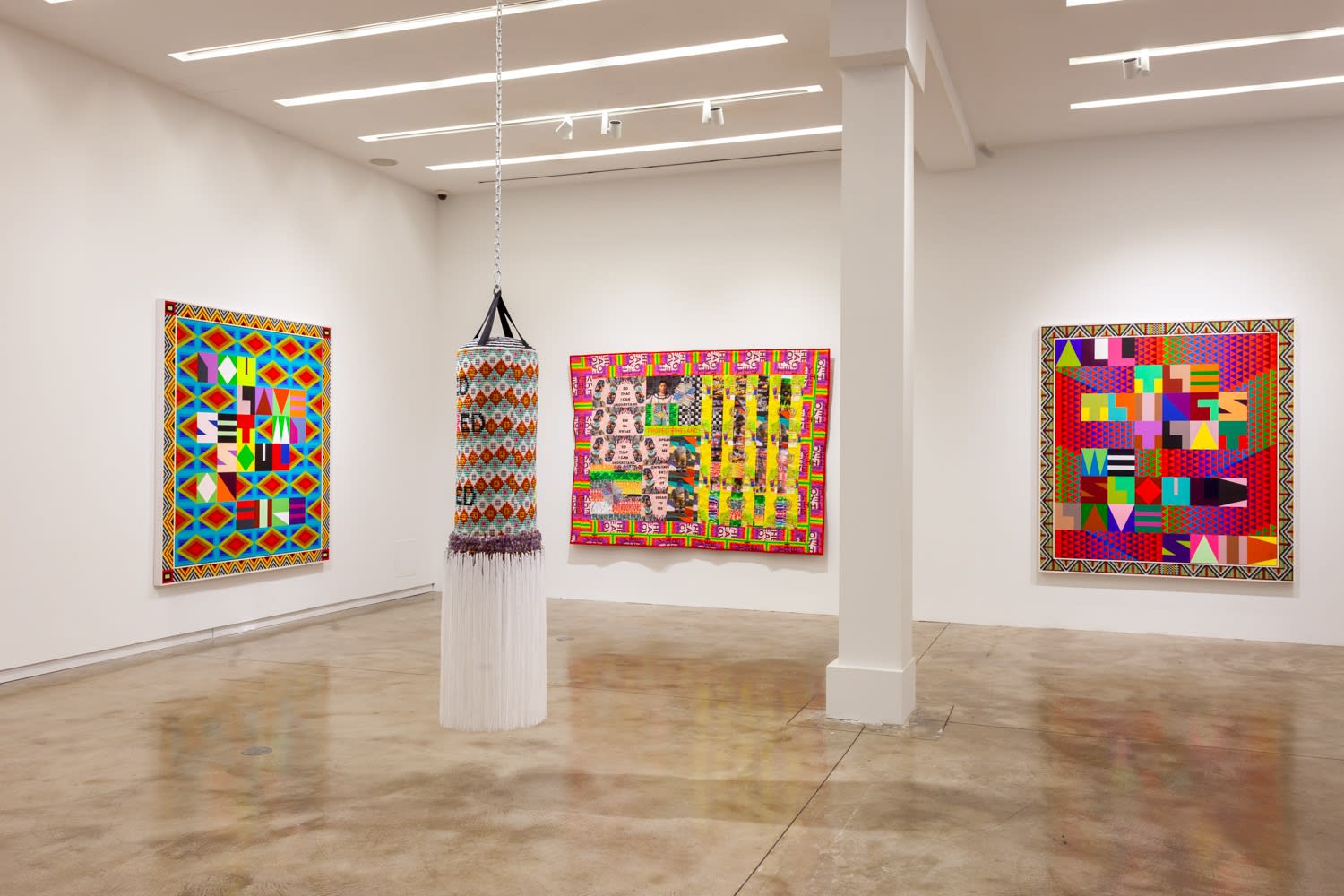
Jeffrey Gibson, CAN YOU FEEL IT (installation view), 2019, Kavi Gupta | Elizabeth St.
Gibson’s work is included in the collections of the Smithsonian Institution, the Whitney Museum of American Art, the San Francisco Museum of Modern Art, the Denver Art Museum, the Museum of Fine Arts Boston, the Eiteljorg Museum, the Nerman Museum of Contemporary Art, amongst others. Recent exhibitions include Jeffrey Gibson: When Fire is Applied to a Stone it Cracks, Brooklyn Art Museum, NY; Jeffrey Gibson: CAN YOU FEEL IT, Kavi Gupta, Chicago, USA; She Never Dances Alone, Times Square Arts; Jeffrey Gibson: This Is the Day, Blanton Museum of Art, Austin, TX, USA; Jeffrey Gibson: The Anthropophagic Effect, New Museum, New York, USA; and Jeffrey Gibson: Like a Hammer, Denver Art Museum, Denver, CO, USA, and Seattle Art Museum, Seattle, WA, USA.
-
-

Jeffrey Gibson, CAN YOU FEEL IT
Kavi Gupta | 219 N. Elizabeth St., Chicago, IL 20 September - 12 December 2019Kavi Gupta is thrilled to present CAN YOU FEEL IT , a solo show of new work by 2019 MacArthur Genius Grant award winner Jeffrey Gibson. -

Jeffrey Gibson, WHEN FIRE IS APPLIED TO A STONE IT CRACKS
Brooklyn Museum | New York, NY 14 February 2020 - 10 January 2021In Jeffrey Gibson: When Fire Is Applied to a Stone It Cracks , the artist selected objects from the Brooklyn Museum collection, which are presented alongside his recent work. The... -

Jeffrey Gibson, She Never Dances Alone
Midnight Moment | Times Square, New York, NY 1 - 31 March 2020A multi-channel video created specifically for the screens of Times Square, She Never Dances Alone (2019) is Gibson’s celebration of the Indigenous matriarchy, centering on the jingle dress dance, a... -

Jeffrey Gibson, BECAUSE ONCE YOU ENTER MY HOUSE, IT BECOMES OUR HOUSE
Socrates Sculpture Park | Queens, NY 10 July 2020 - 23 March 2021For MONUMENTS NOW , Jeffrey Gibson—a recipient of a 2019 MacArthur Foundation “Genius Grant”—presents a monument to inclusion and diversity: Because Once You Enter My House, It Becomes Our House...
-




